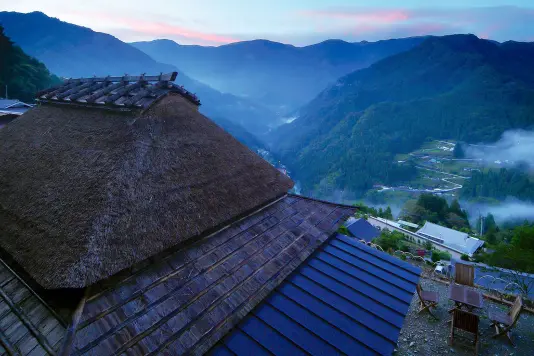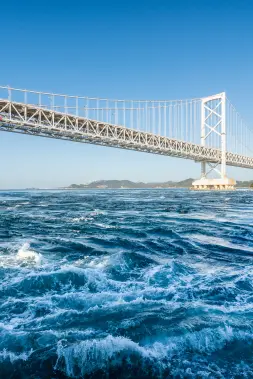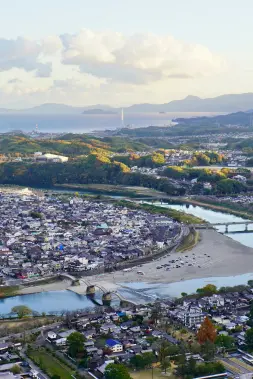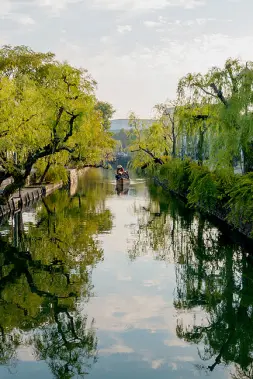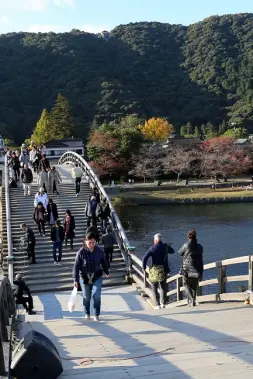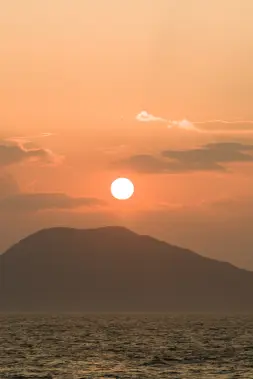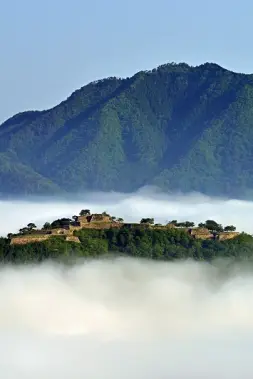Adventure & Experience
A Mini Pilgrimage to Some of the Best Stops Along Shikoku's Legendary Ohenro Pilgrimage Route

-
- RELATED TAGS
-
- LAST UPDATED
- 16 March, 2022
“Japanese spirituality is extremely concrete, realistic, and personal; it is “I alone.” Only when this was experientially understood was the fundamental truth of Japanese religious consciousness established.”
— Daisetz Suzuki (Japanese-American Buddhist monk, writer, philosopher, religious scholar, and translator, who was instrumental in introducing Japanese Zen philosophy to the West)
Kobo Daishi, also known as Kukai, is one of the most famous Buddhist figures in Japanese history. Born in Sanuki, Shikoku island, he traveled to China (also called “To” (唐), the name of China at that time) in 804 to learn the teachings of Buddhism, and upon his return, founded the ascetic Shingon (literally ‘true words’) Sect, which is now one of the primary schools of Buddhism in Japan. Buddhism first arrived in Japan in the 6th Century, but it was the teachings of Kukai centuries later that were fundamental to the awakening of religious consciousness and spirituality in Japan.
Kukai was said to have visited 88 ‘sacred spots’ on his home island of Shikoku where he practiced his asceticism and these were later selected as the official 88 sacred spots on Shikoku, where his journey is celebrated by pilgrims today who follow in his footsteps. The pilgrimage, starting in Tokushima Prefecture, is called ‘ohenro,’ with people walking the 1,400-kilometer clockwise route tracing his path. At each temple, pilgrims make offerings of sutras such as the Heart Sutra and receive a red seal(Gosyuin) in their sutra book. Although some still walk the pilgrimage today (it can take around two months to complete), most now visit Shikoku and its temples when they have time, visiting two or three temples per day by bus or by car, with the goal of completing the pilgrimage at some stage in the future. On our mini-pilgrimage, we start at Ryozenji Temple in Tokushima, the traditional starting place, head west to Kagawa Prefecture to visit Kukai’s birthplace, and then finish at Ishiteji Temple in Ehime Prefecture.
Ryozenji Temple
Ryozenji Temple was first built over 1,200 years ago, and Kukai spent 21 days here on his journey around Shikoku. Known as the sacred mountain temple, it consists of the temple itself and a two-story pagoda first built around the year 1,400. At Ryozenji, you can buy everything you need to start your pilgrimage, including a conical sedge hat, a goshuin book for your seals, and a walking stick. Once you enter through the impressive temple gate, you can ring the bell and make your way to the temple itself. The temple’s main hall features an impressive dragon on the ceiling and is lit by many lanterns, accentuating the solemn atmosphere.
Aside from visiting the temple, you should see the famous Naruto whirlpools while you are in Tokushima. These whirlpools are some of the biggest in the world, caused by the tide flowing in and out of the Seto Inland Sea through a narrow strait. They are visible four times a day, rushing through the channel at speeds of around 15 kilometers per hour as they try to make up the difference in water level of approximately 1.5 meters between the inland sea and the Pacific Ocean. The best places to see the whirlpools are either on tourist boats that go right up next to them or from Onaruto Bridge.
Zentsuji Temple
The next stop on our route is temple number 75, Zentsuji Temple, known as the birthplace of Kukai, which makes it a particularly special stop on the pilgrimage route. This sprawling temple complex at 45,000 square meters is the largest in Shikoku and is spread over two large areas, with the highlights being a 43-meter high five-story pagoda that took about 60-years to build and multiple large halls to explore.
Kukai, the son of a local aristocrat, founded the temple in 807 by restoring his family’s ancestral temple and renaming it Zentsuji using one of the kanji of his father’s Imina name. The Miedo was built on the site of the former residence of the Saeki family and is said to be where Kukai was born, and the spectacular inner shrine displays statues of the priest.
While we were wandering the temple complex, we started talking with a young man, Koji, and his mother, who are participating in the ohenro pilgrimage. This is the first time Koji has joined the pilgrimage, but his mum has completed it three times in the past, the last time being ten years ago. Originally from Nagano Prefecture, they now live in Tokyo and took a few days off to travel to Shikoku and visit its temples. They had multiple reasons for deciding to take on the pilgrimage, with the main reason being as a way to memorialize those in the family who have passed away and to help them enter heaven easily. But other reasons are as varied as wishing for the good health of family members, help with personal problems that affect their daily life, success and wealth for themselves and their loved ones, and just happiness in general. By talking with them, I could understand that although it can be a solemn affair with ascetic elements and a focus on self-reflection, spending time with loved ones and taking life at a slower pace can also be a very relaxing, enjoyable holiday.
Ishite Temple
The final stop on our mini-pilgrimage is Ishite Temple, the 51st temple on the pilgrimage. There are many valuable cultural assets here, including the Niomon Gate, a national treasure, the Syoro (bell tower), and a three-story pagoda, both of which are national important cultural properties.
Ishite Temple is also famous as a temple associated with Emonsaburo. Emonsaburo is said to be the first person to make the pilgrimage, and the name “Ishiteji” is based on an anecdote about him. In this story, a traveling monk passing through the area approached a wealthy aristocrat asking him for a place to sleep and something to eat. However, the aristocrat refused to help the monk, and as a result of this miserly behavior, the aristocrat’s sons all fell sick and passed away. One day, a monk appeared at the bedside of Emonsaburo, who was overwhelmed with grief. That monk was Kukai. In repentance, Emonsaburo decided to leave all his possessions and set out on a pilgrimage to Shikoku in pursuit of Kukai. However, he could not find Kukai. At last, Emonsaburo was on his deathbed. Kukai appears to him again. Emonsaburo apologizes for his past mistakes, and Kukai asks him if there is anything he wished for. Emonsaburo said, “In my next life, I want to be reincarnated as the lord of this land. When Emonsaburo drew his last breath, Kukai wrote “Emonsaburo Returned” on a small stone and had him hold it in his left hand. He did so, and the following year, a boy was born in the house of a lord whose left hand was still tightly clenched and would not open. The parents were so worried that they had the boy go to the temple to pray, and when he did, his left hand opened and a stone with the inscription “Emonsaburo Revisited” came out of it. Therefore, the temple name was changed to “Ishite Temple.”
Conclusion:
Although the idea of going on an ascetic Buddhist pilgrimage on your holiday to Japan might not be the first thing that comes to mind when you think of fun, the ability to travel Shikoku and visit temples with a frame of reference is a compelling concept. Going from the sacred mountain temple through the birthplace of spirituality in Japan, and ending at what may be the source of Ohenro itself, makes for a spiritual journey as well as a good story.
Photographs and text by Don Kennedy
RELATED DESTINATION
Tokushima
It has lots of tourism resources including the Naruto Strait, which has one of the largest eddying currents in the world, and the Iya Valley, which captivates everyone who sees its overwhelming natural scenery. The traditional Awa Dance Festival, which teems with 1.3 million tourists, is a must-see.
